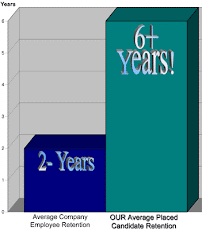Saturday
The Jobless rate of Middle-Aged Workers (45-65)
is at its highest in 70 years…..
Much of the attention during the prolonged U.S.
employment crisis has been on high rates of joblessness among young people.
Less noticed, but no less significant to many economists, has been the plight
of the middle-aged. More
than 3.5 million Americans between the ages of 45 and 64 were unemployed
as of May, 39% of them for a year or more—a rate of long-term unemployment that
is unprecedented in modern U.S. history, and far higher than among younger
workers. Millions more have quit looking for work. This is an enlightening
article in the WSJ
The struggles of the middle-aged unemployed point
to a larger economic problem: The labor market can't fully heal until people
like Ms. Adams and Messrs. Daniel and Schoolfield can get back to work. The
longer it takes, the deeper and more permanent the scars of the recession
become—not just for the workers themselves, but for the broader economy.
Middle-aged people struggle
to find work for a variety of reasons: They are more reluctant to change industries than their younger
counterparts and tend to have greater financial commitments that make it harder
to start over with an entry level job. Because they made career choices decades
earlier, they are more likely to work in industries in decline.
They are also less able to move to find work, more likely to be
tied down by a mortgage or a spouse's job. Experts say employers often give
preference to younger workers, who they perceive to be more flexible,
technologically savvy and able to "grow with the company."
"They [companies] tend to go for a younger worker, a more
recently educated worker, a more recently trained worker," says James
Manyika, a director at the McKinsey Global Institute who has researched employment
trends. "If you're 50 and you've been out of employment for a while, it's
going to be way harder to get back in."
One solution: the
Trade Adjustment Assistance program, which pays for retraining laid-off workers
in manufacturing and other industries affected by globalization, yet even then,
one needs a potential employer willing to hiring someone who has been
retrained, yet doesn’t have the industry experience required by main companies.
Although the article didn’t focus on any specific
solutions, below are a few tools a middle-aged person can do to increase their
chances of finding gainful employment;
1.
If able to obtain
re-training – take it. But always keep a part-time job, consulting or even
volunteer work while unemployed and re-training. Potential employers look at
what you do with your time while unemployed.
2.
If you have some
funds stashed away, consider a career management consultant who can not only
help you focus your resume, but can help you strategize your job search, and
even help “market” you.
3.
Network. Join
Industry trade organizations and network with industry pros who may become
future employers and co-workers.
4.
Avoid networking
groups of “job seekers”. Where groups of unemployed people gather is filled
with negativity and detrimental to your success.
5.
Make sure your
Linked-In profile is current, professional and detailed with successes.
6.
When responding
to job posting, only respond to posting you are truly qualified for and follow
submitting instructions. One out of five
people that respond to my postings are rejected simply because they can’t
follow instructions.
7.
Follow up once
you’ve applied for a position. Persistence is important but stalking is
discouraged
Subscribe to:
Comments (Atom)













